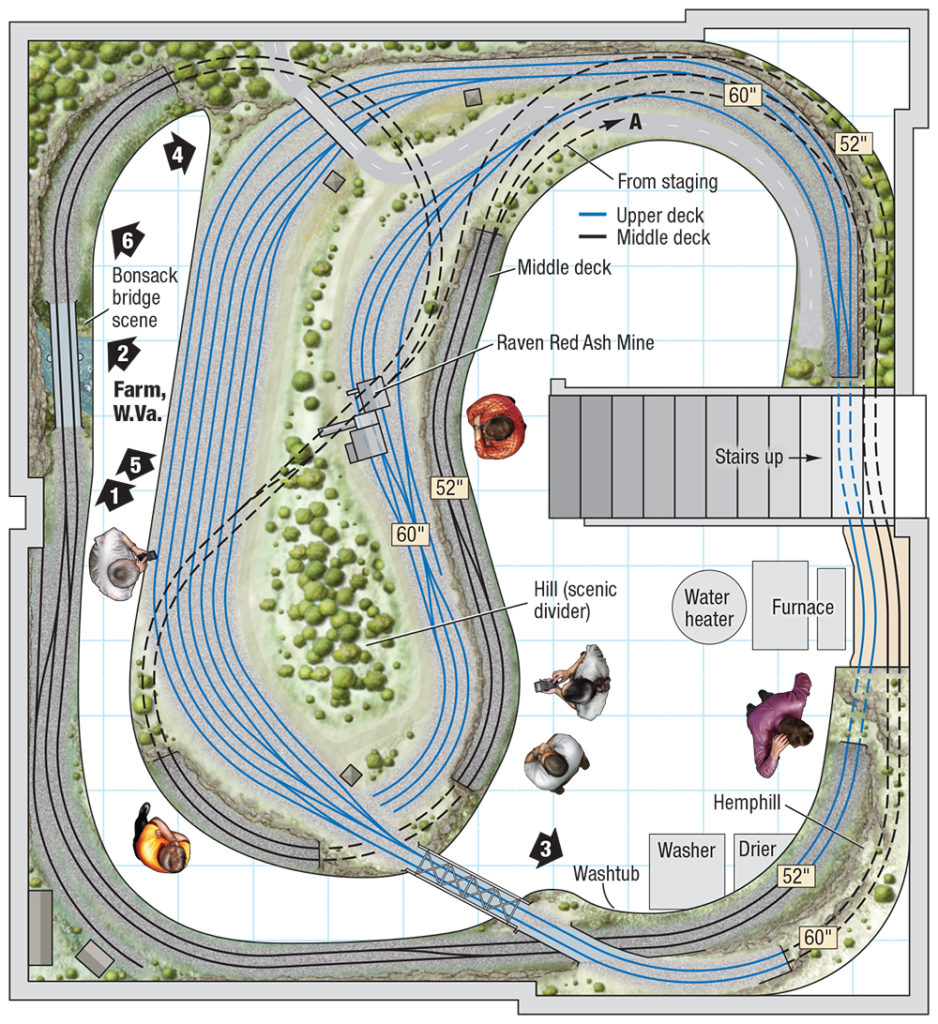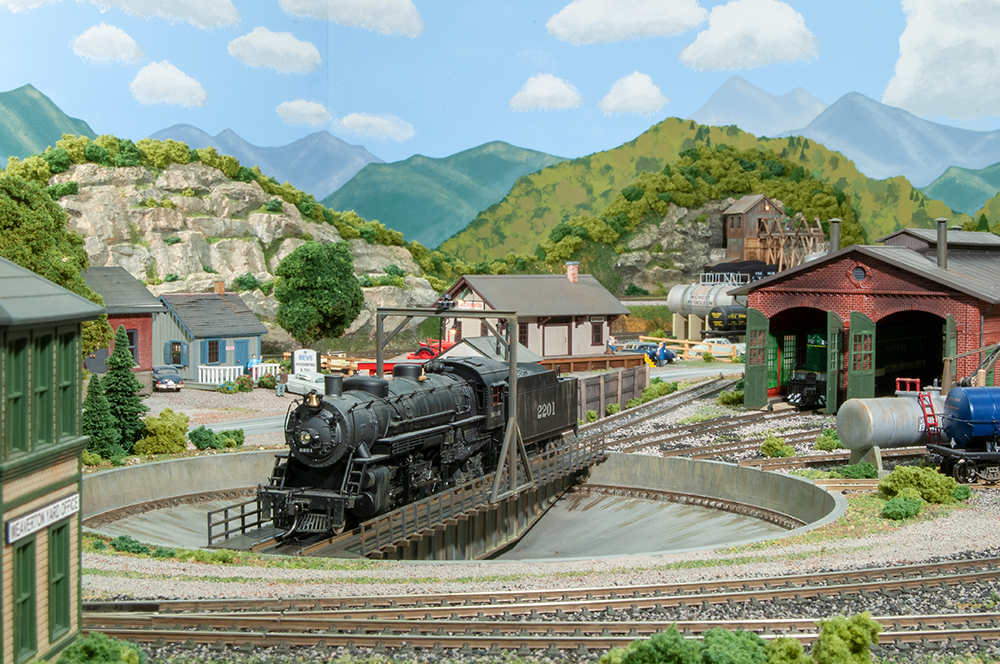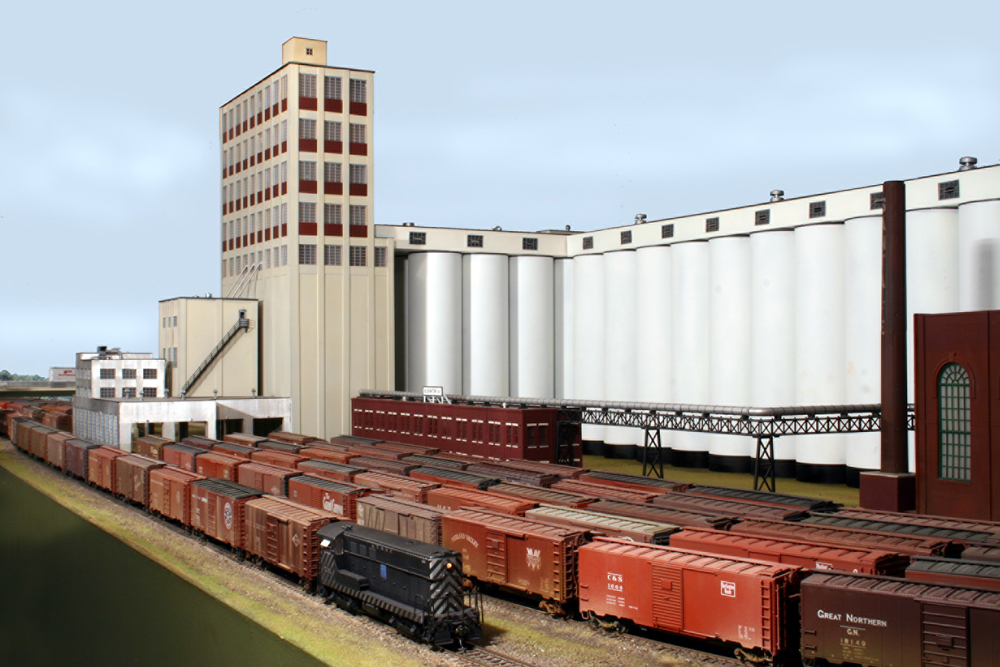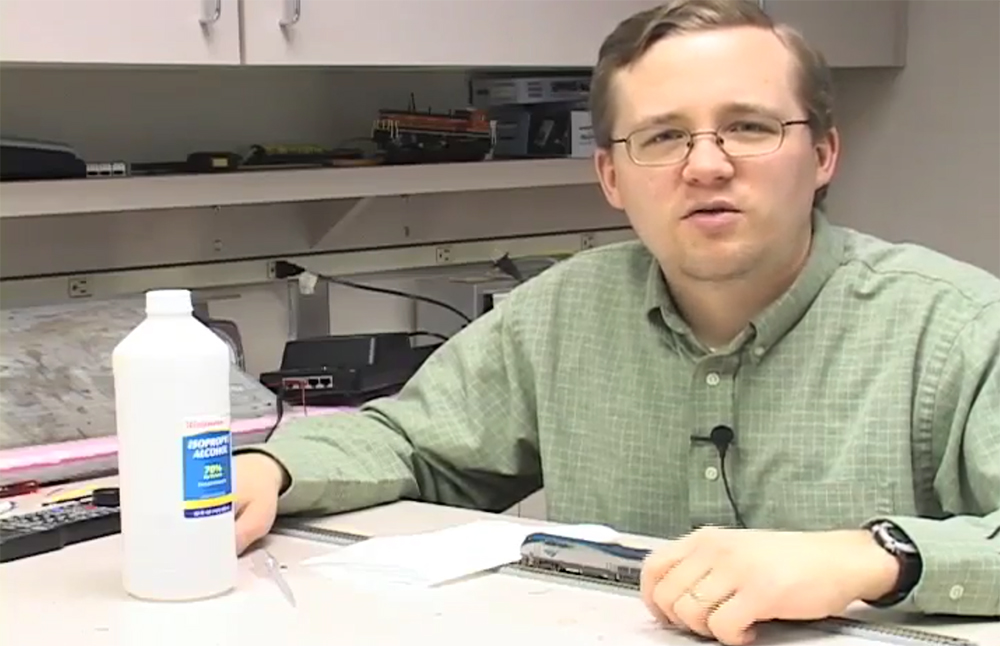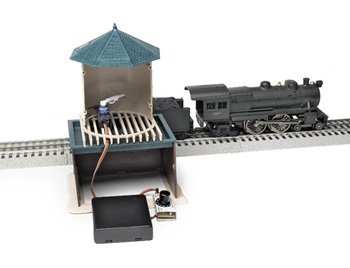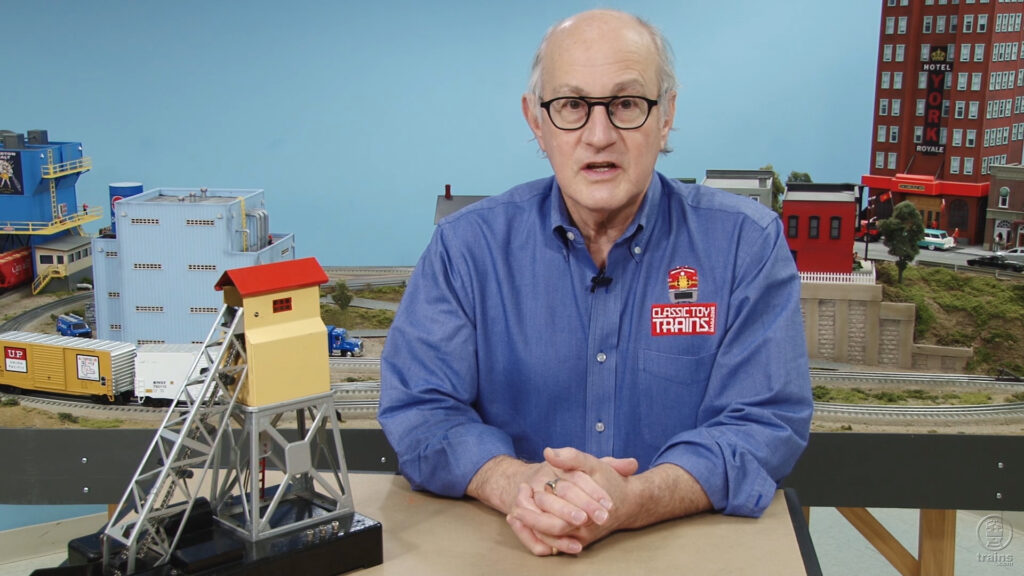
The bridge assembly is well underway, so David can now focus on building and installing the wheels that put his O scale laser-cut wood turntable kit into motion. If that’s not enough, he even gets the rails placed on bridge deck and takes a locomotive for a spin! […]
Read More…
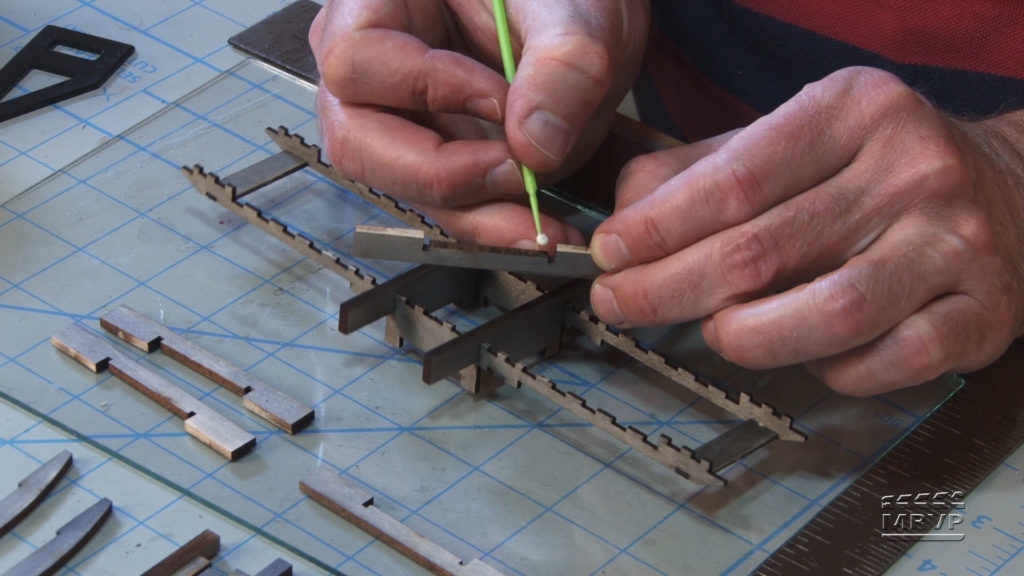
After installing the motor mechanism, David adds an automated polarity control to his O scale laser-cut wood turntable kit. And then, it’s on to separating, sorting, and building the bridge assembly. […]
Read More…
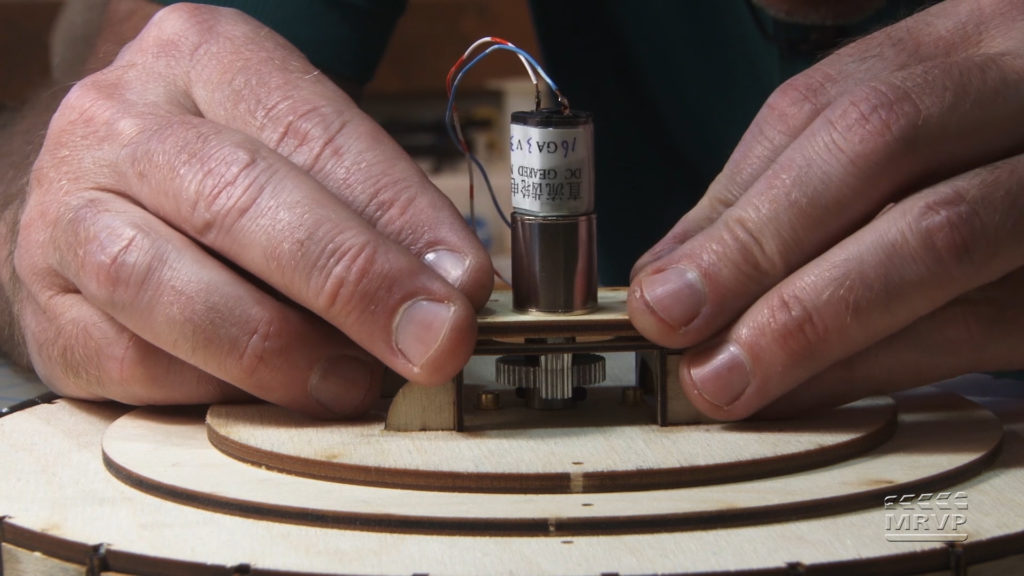
David has now arrived at the stage where it’s time to install the drive mechanism into his assembled O scale laser-cut wood turntable kit. Follow along as he shares his process for fitting the 3-volt can motor and reduction gear used to put the structure into motion. […]
Read More…
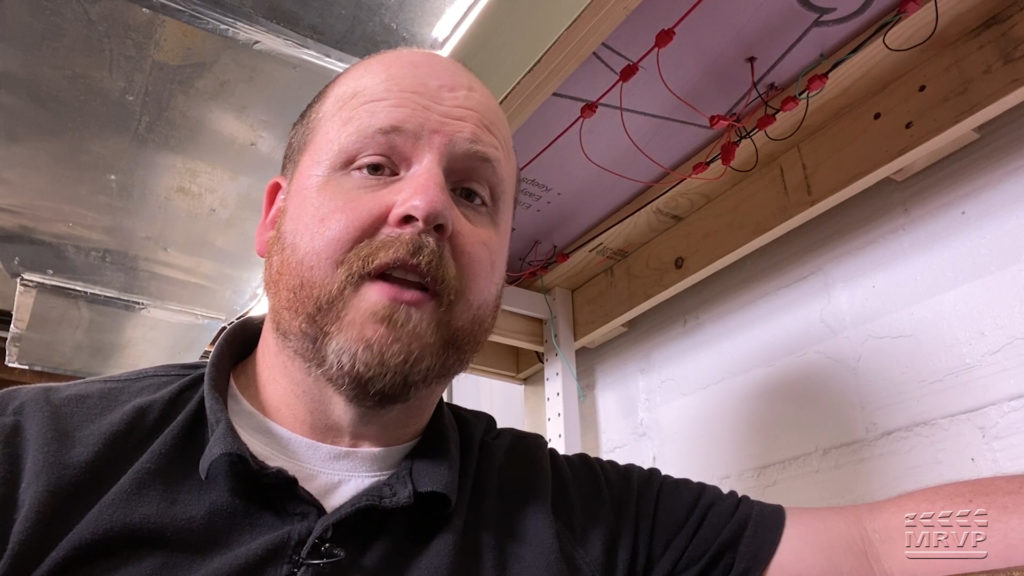
In this episode of The Hills Line, host James McNab crawls under his emerging HO scale layout to walk and talk you through wiring techniques. His focus on harnessing electrons and connecting electronic devices promises to make the model railroad action especially interesting atop the benchwork! […]
Read More…
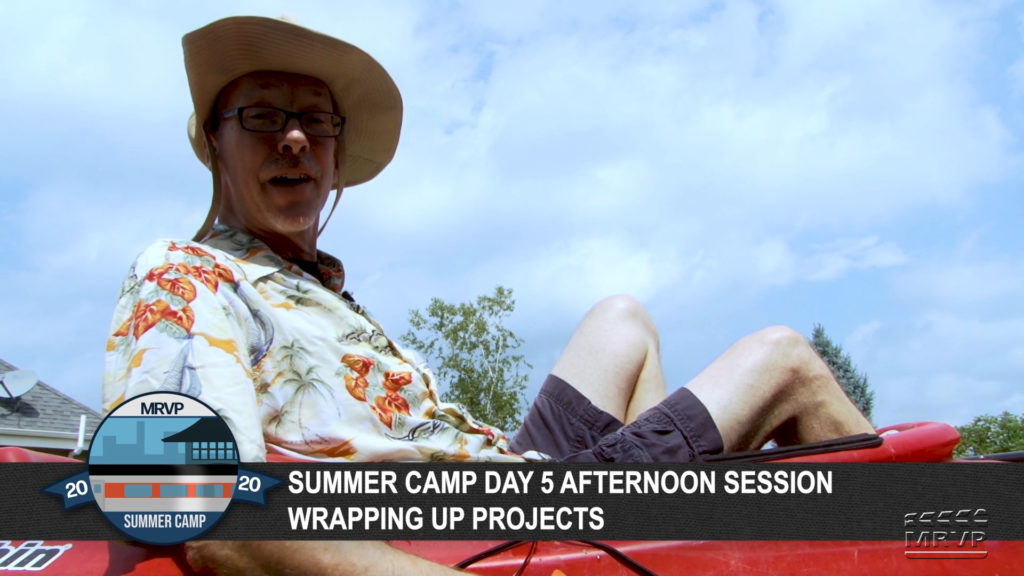
It’s the final session of Summer Camp 2020 and Camp Director David Popp is paddling fast to finish his projects with a flourish! See how interior details, coupled with exterior decals and weathering, give the RPO car an authentic appearance. Then, it’s over to the tower, where you’ll see how the rooftop assembly fits onto […]
Read More…
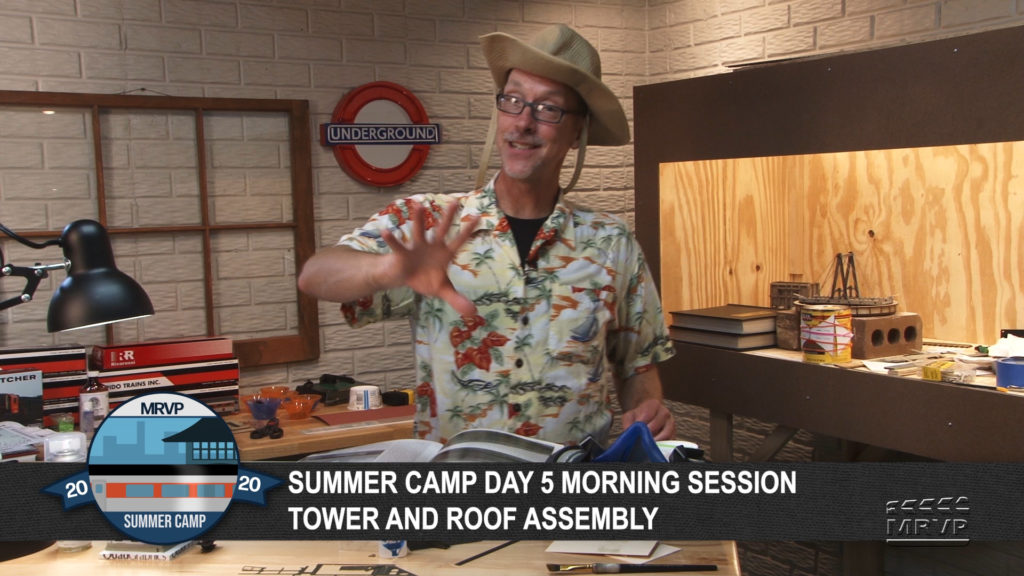
Camp Director David Popp is making a mad scramble to complete projects on the final day of MRVP Summer Camp 2020! For this morning session, he first shares the processes he used to mask/paint his RPO. And then it’s quickly back to assembling the tower structure. Hold on to your hat! […]
Read More…






